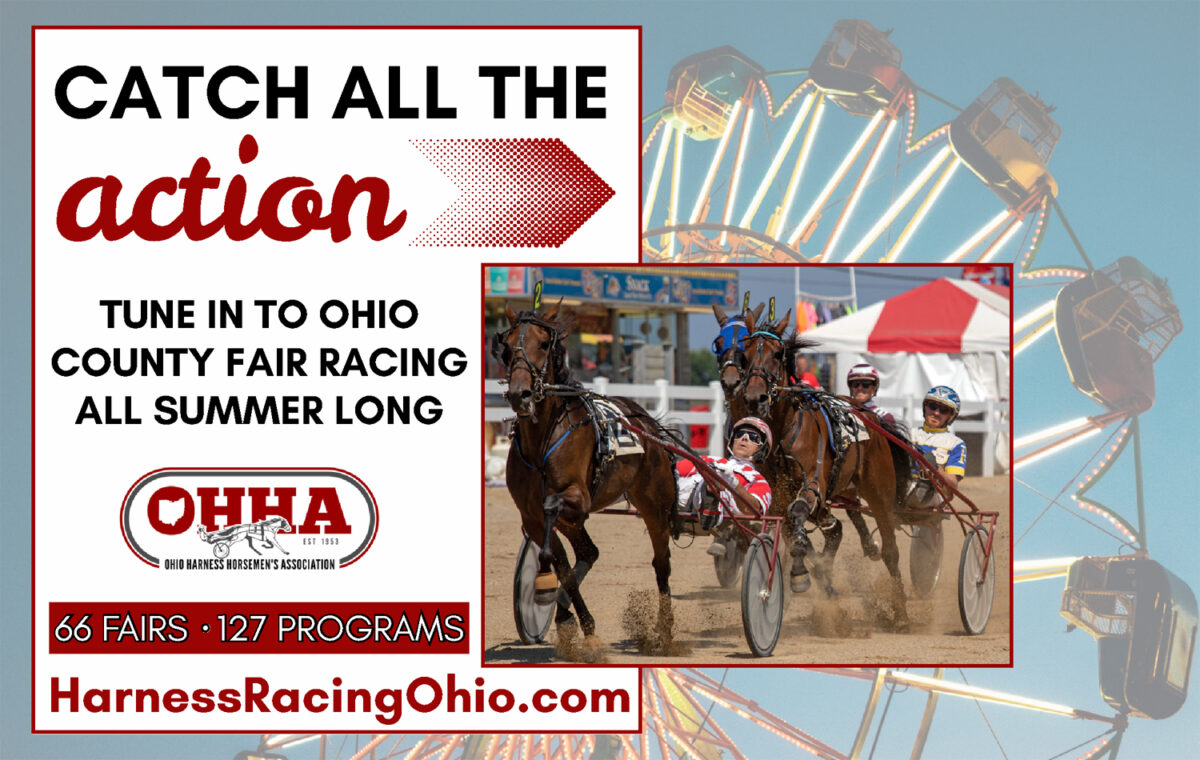In Ontario, AGCO takes steps towards driver integrity
by Brett Sturman
Last week concluded the first series of what’s being described as paddock meetings across Ontario, in which Alcohol and Gaming Commission of Ontario (AGCO) officials met with respective driver colonies at tracks across the province. In these meetings, discussed was a step-up in the expectations and enforcement rules already on the books.
The paddock meetings were the result of a series of consultation and workshop groups for over the past year, and the timing of these meetings now couldn’t be any more appropriate as the items discussed in the meetings have never been more prevalent on the racetrack.
From consultation on rules and regulations over the past year with different internal and external AGCO stakeholders across the province, there were consistent things noted throughout the roundtable and reform meetings. Most notably, the consistent enforcement of common rule violations.
From there, AGCO Director of Racing Brent Stone describes how those findings came to be and how they led to the paddock meetings taking place today.
“At the same time we were going through our AGCO consultation period, the USTA with John Campbell leading the charge started up a rule review process as well to get consistent rules across not just the States but also into Canada,” Stone said. “When you take that along with the concurrent rules review by (Standardbred Canada president) Dan Gall, we saw a bit of a common theme in the need for greater consistency in enforcing those rules identified.
“One of our senior race officials, Tom Miller, attended the USTA meetings and was briefed on the Standardbred Canada updates. He was able to sit down with other managers and supervisors and we were able to come up with a list of things that we wanted to go out and having paddock meetings with the drivers throughout Ontario and bring some of these rules to their attention to educate them and ask for compliance with these rules.”
The areas of the rules targeted by AGCO for these paddock meetings will be of no surprise to anyone who follows harness racing.
Detailed by Stone, these items include keeping post parades in order, correcting the optics of drivers talking to one another on the track, ensuring all horses are on the gate and having good starts, the issue of keeping racing competitive with regards to not giving up holes and keeping holes closed, drivers pulling horses to the outside and then intentionally not advancing, slow fractional times, allowing horses to needlessly pass up the inside, and consistency in the enforcement of urging rules.
There are dual purposes to the paddock meetings. On one hand, they are designed to educate drivers of the rules, but they also serve as a warning and put drivers on notice that judges will be taking a harder line with regards to questionable actions and tactics that had been somewhat more tolerated in the past.
While the paddock meetings are a necessary and positive result from the series of working groups, one only needs to look at racing on a daily basis to see the need for the enforcement of rules.
Using the WEG tracks of Mohawk and Woodbine as examples, since they’re the most high-profile tracks in Ontario, it’s clear that drivers have taken liberties with the rules. The lax enforcement of rules has allowed a culture of buddy systems and unwritten gentlemen’s agreements to take form and as a result, the racing product suffers.
To this point, this past week on social media, two-time Hambletonian winning trainer and Canadian Horse Racing Hall of Fame inductee Blair Burgess got into it a bit with two top WEG drivers over the relationship amongst drivers during a race. What Burgess did was essentially raise the point that drivers selectively pick and choose with other drivers they elect to give holes to, so that drivers from outside post positions can leave knowing that there will be a hole waiting for them. Burgess also addressed the issue of horses pulling to the outside and not advancing as a detriment; not coincidentally one of the topics that Stone also described.
One of the many issues with rules not being enforced is that it naturally lends itself to questionable drives. Stone acknowledged this concern.
“We want our officials to make sure there is a compliance with the rules, but also at the same time they have to be able to read a race,” Stone said. “And to understand the natural flow of a race and heavy favorites that are driven a certain way should be in their mindset when they see something that looks out of the norm, so to speak.”
In fact, AGCO judges did call into question a drive from Louis Philippe Roy from Feb. 9, as noted on that night’s AGCO Senior Judges Report.
In this race [race can be seen here], Roy drove even money favorite Bettim Jackie and made the front easily. On the lead, Roy was approached by Jody Jamieson on an 18-1 longshot attempting to quarter move. Jamieson’s horse is under all sorts of urging to try to clear while the track announcer’s call goes “Bettim Jackie taken under a hard hold here by Roy.” Roy did everything he could to let Jamieson’s longshot go by and predictably, Jamieson’s horse came to an immediate stop taking Roy’s even money horse out of the race. The kicker in this is that Roy did all he could to let Jamieson go while restraining his mount through a second quarter fraction of just :29:3.
In the AGCO judges report six days later from Feb. 15, Roy was assessed a $300 penalty for driving in an unsatisfactory manner. Interestingly, this same Feb. 15 card featured a race with a suspect drive perhaps even worse than Roy’s, but no mention was made on the night’s report about a driver being called in for review. In race 8 from this night [race can be seen here], Sylvain Filion was driving even money favorite Beachin Lindy. Filion sat the pocket while being wrangled throughout the mile to not run over the horse in front of him. With every chance to pull around the final turn, Filion elected to stay in and it was obvious enough to the point where the track announcer flatly commented “Filion failed to pull.” Amidst the confusion, Beachin Lindy broke, came back on and somehow still just missed in a race where he was 10 lengths the best.
These two races present instances where if judges are going to take a sterner approach in enforcing the rules, that there is consistency in holding drivers accountable in races that look similar.
AGCO’s paddock meetings and making a more concentrated effort to enforce existing rules is a step in the right direction. It will remain to be seen, however, if simply enforcing the rules will be enough to promote further integrity, or if new rules and tougher measures need to be taken.
















